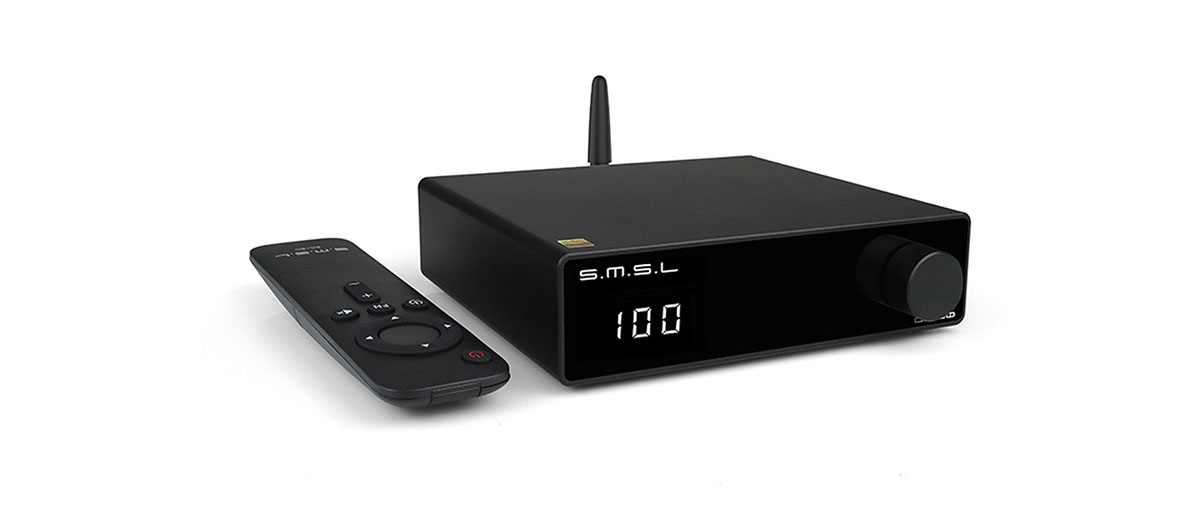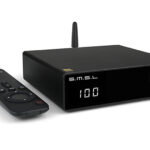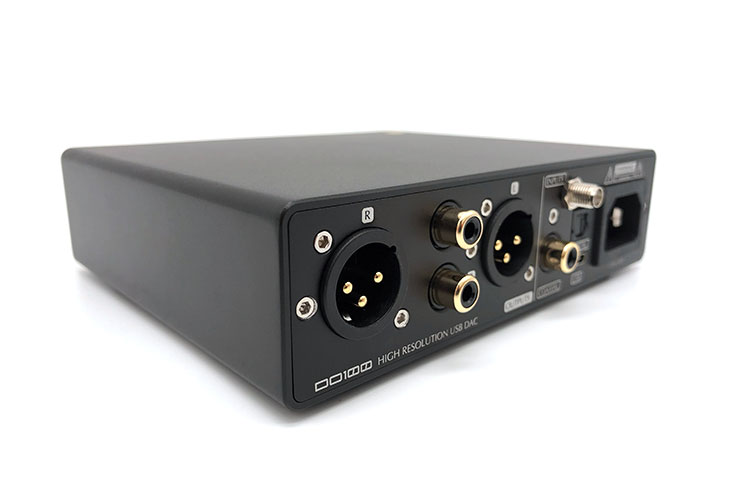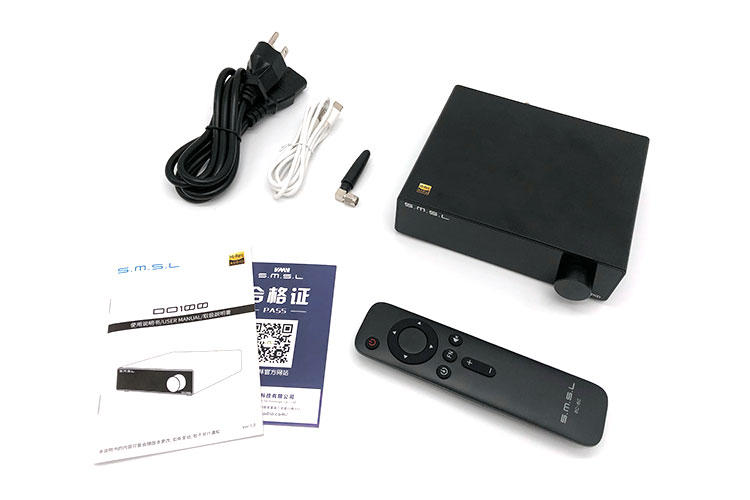In today’s review, we look at the new SMSL DO100 DAC which is a new desktop unit capable of up to DSD512 and Bluetooth LDAC decoding. It is priced at $239.
Disclaimer: This is a sample that was sent to us in exchange for our honest opinion. Headfonics is an independent website with no affiliate links or status. We thank Aoshida Audio and SMSL for giving us this opportunity.
To learn more about SMSL products that we have previously featured on Headfonics click here.
Note, that this article follows our latest scoring guidelines which you can find in more detail here.
Today we’re checking out the DO100 DAC which is the more compact reimagination of the higher-end DO200 by using a different chipset and deletes the support of MQA playback.
As it complements the recently reviewed HO100 amplifier forming a neat desktop stack, I put this $239 unit to the wringer to see if it’s a bargain buy or not.

Tech Highlights
The SMSL DO100 DAC uses a dual ESS ES9038Q2M chipset implementation for a fully balanced internal design. With a second-generation XMOS chip in tow, it accepts and converts up to 32BIT/768kHz of PCM signal, native DSD512, as well as DoP256.
Adding the convenience of Bluetooth, the DO100 uses a chip from Qualcomm’s QCC5100 series, the QCC5125. With modern protocols such as LDAC, APTX/HD, SBC, and AAC supported, users are given the freedom to listen to high-resolution audio wirelessly at up to 24BIT/96kHz.
Complementing the DAC stage is the well-engineered output stage outfitted with four dual OPA1612 op-amps. With audio-grade components and a built-in power supply to add, the THD+N of the DO100 came down to a low 0.00008%.
Design
SMSL is no stranger to color options but they kept it simple with the DO100 offering it only in black. It is made with a single block of CNC’ed aluminum which gives a compact yet substantial impression.
While not grabbing for attention, it is a neatly crafted chassis that is free from visible screws as it tucks these away at the back along with the I/O. From the front, the tempered glass is a prominent feature along with a smoothed volume wheel that is adequately tall to avoid leaving fingerprints on its reflective backdrop.
Behind the glass towards the left lays a hidden 7-segment display that is quite easy to miss whenever the unit is powered down. Although easier to miss is the separate DSD cutout that lights up at the bottom right of the display.
And with a notable selection of ways to connect both in and out, the back of the unit while making the most of its available space can be a bit crowded especially around the input section.
I/O
Boasting a gold plating advantage in every socket possible, all the exciting bits of the DO100 can be found in the rear as it sports a capable list of inputs and outputs.
With the inputs sprayed across the right of the device, users can choose between USB-C, Coaxial, and Optical not limited to PCM but also supporting DSD. Another feature that can’t be missed is the Bluetooth 5.0 receiver improving accessibility to any device.
Lucky for serious enthusiasts looking to interface with their balanced gears, the DO100 not only offers single-ended RCA connections but also comes with a pair of balanced XLR sockets.
Measured at 2Vrms and 4Vrms for RCA and XLR consecutively, the output stage is versatile for use not just with downstream amplifiers but also with powered speakers.
Control
Unlike other units I’ve tried that don’t have a dedicated power switch, the DO100 did not immediately turn on upon plugging in. Instead, I had to wake it up by pressing the volume knob which initiated the welcome sequence displaying ‘100’ in short of DO100, input selected, and volume, before resting with the sampling rate.
The digital volume has a range of 0 to 99 with an increment of 1dB. Doubling as a button, it can be short pressed to select and enter a menu while turning is for changing an option.
What can be changed using the interface are the inputs, PCM filters, DPLL, USB mode, and Brightness level. The DO100 came from the factory using the USB input, fixed minimum phase fast roll-off filter, and level 1 display brightness.
And having a remote that has one of the more logical and simpler layouts I’ve come across bundled with a product, setting selection using this method was fairly intuitive. Plus, aside from what the volume knob is capable off, the remote adds a mute and display off option.
Packaging & Accessories
Keeping things uniform and tidy across its long list of products, SMSL has been sending their audiophile components in a familiar white box only refreshed now and then with details and graphics longtime fans would appreciate.
With the DO100, the only distinction is with its outline that has been printed along with the cover.
Yet even with the affordable price tag, SMSL kept the DO100 impressive coming with a nice set of accessories Inside including a remote, Bluetooth antenna, power cable, and a white USB-C to USB-A data cable.
This is after removing the foam protecting the contents and letting out the divided sections of the DAC safely stowed on the left and the extras to the right.
Finally checking out the DO100, its glass screen came protected with a thin peelable film. Although having a volume knob obstructed the removal of the film and needed a tiny incision to split across.
Sound Impressions
Summary
Lightly alluding in the intro regarding this DAC’s performance, SMSL chose to keep it modest by tuning the DO100. Without any major dips or humps, it rarely strayed beyond the expected amount of emphasis with regards to an image being portrayed.
It is not as striking or moving as other DACs which leads me to believe that the DO100 isn’t meant to astound but is made to be a trusty companion as owners build the rest of their chain. Almost hands-free in coloring sound, it joins the saturated market of neutral gears and prioritizes technical dexterity in exchange.
Timbre
Compared to warmer DACs I’ve tried before, the DO100 did not stimulate any toe-tapping and head-bobbing when I first gave it a listen. But as I warm up to its clean and pure translation of digital signals passing on to the rest of the chain, it quickly revealed its charm in being cool and composed.
It punches with authority while carrying decent definition and separation keeping the nature of the instrument allowing even thicker blows to scatter and not be limited in dimensionality.
But with longer sustains from bass guitars, it lacks that final bite and impressive appeal as it comes short on deeper sections that require more micro details.
With a smooth transition of the bass to the mids, there is no added euphony or warmth in the vocals as singers will be shown with honesty which is easily adjusted and controlled with the amplifier being paired.
Even with the humming of a lullaby, the DO100 remained chiseled and unexciting only slightly touched by a prominent tick in energy in a specific section around the upper midrange increasing in presence but careful not to lose control.
Playing melancholic instrumentals, the depiction of the piano isn’t overly dramatic although with enough emotion to convey each note. Expect strings to be thin, supported by a polite reverb presenting crucial information and air.
The DO100 is pleasantly cozy up top with a nice amount of zing and energy erring on the safer side of bright. Usual suspects of ear fatigue like dynamic horn passages are controlled and put in place, while cymbals are well defined and extended.
Staging
Continuing its attachment to honesty in presentation, the DO100 is also not an overly wide nor intimate DAC when it comes to staging width.
With an even distribution and separation of images scattered around, only minor differences in size detract as brighter instruments and bass drums appear bigger when compared to other parts of the song. But not to be left behind, vocals are well isolated and play with the rest of the instruments that have a strong sense of left-to-right imaging.
There is no major fault when putting on faster and more dynamic tracks as the DO100 handled most with great control and allowed wide fluctuations in intensity play with natural precision.
Bluetooth Performance
The DO100 connected with ease right after switching to the Bluetooth option and paired initially with my phone. But unlike other DACs that continuously link with known devices even if Bluetooth is not being used, here Bluetooth will disconnect if another input is selected.
It will initially display ‘BT’ until playback begins which will change the text to the protocol it is receiving. I was able to maintain a strong signal 10 meters away from the source that is even behind two walls.
Already breaking the $200 price point, going wireless is not without expectation as it could be the difference between a stellar product or ending as a pointless feature. And while there are areas that didn’t match the wired performance, it noticeably retained a similar sense of flavor and presentation.
What immediately struck me are the cymbals that got reduced in presence and horns that developed a bigger image with a shoutier edge. Vocals received a thinner timbre and were found grainier on microdetails.









